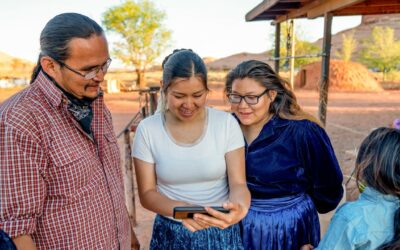How Does Text Messaging Work for Nonprofits?
Like any type of organization, nonprofits depend on connecting with their audiences in effective, inspiring ways. Learn how text messaging can help you make a big impact.
Text messages are becoming one of the most common ways people communicate. They’re more personal than an email and don’t require as much continuous attention as a phone call. Most people always have their cell phones with them, so it’s an effective method to reach people in the moment.
When you’re considering implementing text messaging for your nonprofit, there are many benefits of doing so. You can generate more interest and awareness and more efficiently communicate alerts and information about events.
Here’s what text messaging is and the top benefits of using it in your nonprofit.
What is text messaging’s role in a nonprofit organization?
Text messaging is an outreach channel that allows you to directly connect with individuals. It can often be a more effective method than channels like social media or email because the modern consumer is always on their cell phone and checks messages more often and more reliably than any other channel. According to a survey from Asurion, Americans check their phones 96 times throughout an average day, or once every 10 minutes.
Because this format is more personal than other channels, your donors are more likely to pay attention to it. An SMS message also does not require an internet connection on either end since texts are received and sent using phone service.
Many nonprofits are taking advantage of this avenue for outreach to better engage and inspire their audiences. Let’s take a deeper look at the top text messaging benefits for nonprofits.
7 Benefits of text messaging for nonprofits
1. Cost savings: Text messaging can be a cost-effective outlet to add to your outreach strategy. You can send mass texts to hundreds of thousands of people with one click, spurring a lot of engagement with minimal work on the backend. This is a major plus for member organizations on a strict budget.
2. Target the right people: SMS messaging empowers you to reach your target audiences more efficiently. You can segment your lists so the messages you’re sending are only sent to individuals who you want to receive them.
3. Send text surveys: Part of understanding your nonprofit better is understanding how your constituency is interpreting and experiencing it. Send out text surveys to connect with users on a more intimate level, requesting their feedback, which you can then use to reach them in the future.
4. Reach the masses: Using an SMS texting platform, you can send out texts to millions of people at the same time. This frees up time and energy to focus on other aspects of your nonprofit.
5. Reach younger audiences: The same Asurion survey mentioned above found that people between age 18 and 24 check their phones twice as much as the national average. So, when your audience is comprised of younger generations, texting is extremely effective.
6. MMS messages: Texting your audiences doesn’t limit you to words. With MMS messaging, send images, photos, GIFs, and video files to enrich your content.
7. Track metrics: You don’t have to blindly send out text messages hoping that someone sees them. SMS texting allows you to track messages, including response and read rates. You can then summarize the data and identify patterns and behaviors.
Examples of nonprofit texting in action
Now that you know what texting for nonprofits means and how it can benefit member organizations, let’s think through how it looks in action. First, the most immediate advantage is the ability to reach more people quickly. This way, nonprofits can expand their reach in the community, which creates more:
- Awareness
- Opportunities for action
- Opportunities for donations and support
Nonprofits can also improve their staff management and operations. When you can text not only your audience but your employees and volunteers, you improve coordination of scheduling and better ensure that your efforts to serve the community are successful.
Take the example of a food bank. When an event is coming up, coordinators can send out mass texts to volunteers to communicate when and where they’re supposed to be and their specific tasks for the day. Volunteers and supporters can also text the food bank if they have questions or concerns.
Another way text messaging can help a food bank is by generating awareness. You can send out texts to people who have used your services in the past to keep them in the loop with updates. You can also reach new people with texts who can spread the word and generate more community support for what you’re doing.
And that brings us to fundraising: Food banks can see major benefits by sending out texts that encourage the community to donate to the cause, whether financially, in material, or with their time. Surveys also give food banks more visibility into how effective they are and what they can do differently.
How to begin with text messaging
To start with nonprofit text messaging, use a platform that will do a lot of the work for you. Mobilize Comms empowers you to reach more people and collect the right data to help you keep improving. Send out mass texts and enjoy advanced features like contact lookup and supersized messages up to 1,000 characters.
View our plans and pricing to get started with SMS messaging for your nonprofit.



